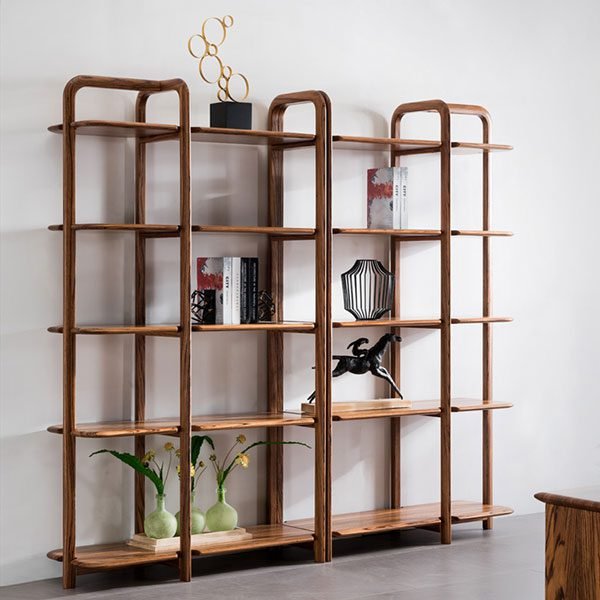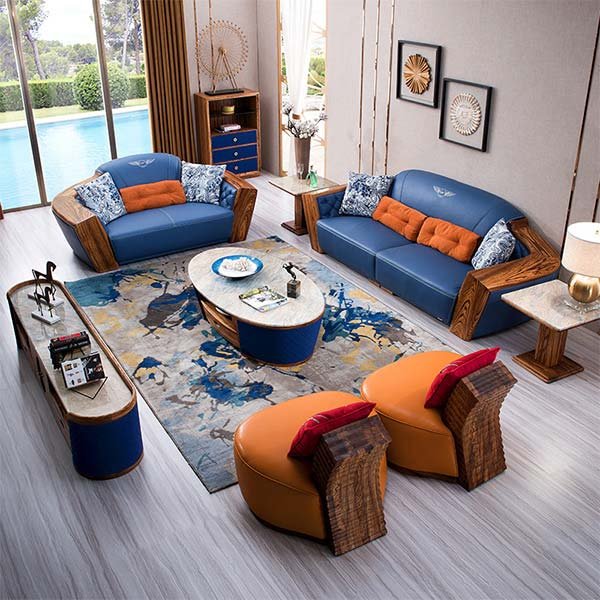“Choosing the perfect wood for your bed: Weighing the pros and cons for a restful sleep.”
Oak
Oak is one of the most popular wood types used for making beds. It is known for its durability and strength, making it a great choice for those looking for a long-lasting and sturdy bed frame. However, like any other wood type, oak also has its pros and cons that should be considered before making a purchase.
One of the main advantages of oak is its durability. Oak wood is known for its strength and ability to withstand wear and tear. This makes it an excellent choice for beds that are expected to be used for many years. Oak beds are less likely to break or get damaged compared to beds made from other wood types.
In addition to its durability, oak also has a beautiful and timeless appearance. It has a rich and warm color that adds a touch of elegance to any bedroom. Oak beds can easily blend in with different interior styles, whether it’s a traditional or modern design. The natural grain patterns of oak also give it a unique and attractive look.
Another advantage of oak is its versatility. It can be easily stained or painted to match any color scheme or design preference. This allows homeowners to customize their beds according to their personal style. Oak beds can be finished with a clear coat to enhance the natural beauty of the wood or painted in a variety of colors to create a more contemporary look.
However, there are also some drawbacks to consider when choosing oak for a bed. One of the main disadvantages is its weight. Oak is a dense and heavy wood, which can make it difficult to move or rearrange the bed. This can be a disadvantage for those who like to frequently change the layout of their bedroom.
Another disadvantage of oak is its cost. Oak is considered a premium wood, and as such, it tends to be more expensive compared to other wood types. This can be a limiting factor for those on a tight budget. However, it’s important to remember that the higher cost is often justified by the durability and longevity of oak beds.
Lastly, oak beds may require more maintenance compared to other wood types. Oak is susceptible to scratches and dents, so it’s important to take proper care of the bed to maintain its appearance. Regular cleaning and polishing can help prevent damage and keep the bed looking its best.
In conclusion, oak is a popular choice for beds due to its durability, timeless appearance, and versatility. It offers a strong and long-lasting bed frame that can withstand daily use. However, it’s important to consider the weight, cost, and maintenance requirements of oak beds before making a decision. Ultimately, the choice of wood type for a bed should be based on personal preferences and budget constraints.
Pine
Pine is a popular choice for bed frames due to its affordability and versatility. However, like any wood type, it has its pros and cons. In this article, we will explore the advantages and disadvantages of using pine for bed frames.
One of the main advantages of pine is its affordability. Compared to other wood types, such as oak or mahogany, pine is much more budget-friendly. This makes it a great option for those on a tight budget or looking for a cost-effective solution.
Another advantage of pine is its versatility. Pine can be easily stained or painted to match any bedroom decor. Whether you prefer a natural wood look or a bold color, pine can be customized to suit your style. This flexibility allows you to create a bed frame that perfectly complements your bedroom design.
Additionally, pine is known for its durability. While it may not be as strong as hardwoods like oak or maple, pine is still a sturdy wood that can withstand regular use. With proper care and maintenance, a pine bed frame can last for many years.
However, pine does have its drawbacks. One of the main disadvantages is its softness. Pine is a softwood, which means it is more prone to dents and scratches compared to hardwoods. This can be a concern if you have children or pets who may accidentally damage the bed frame.
Another disadvantage of pine is its susceptibility to moisture. Pine is a porous wood, which means it can absorb moisture easily. This makes it more prone to warping or rotting if exposed to excessive humidity or water. To prevent this, it is important to keep your pine bed frame in a dry environment and avoid placing it directly on the floor.
Furthermore, pine may not have the same aesthetic appeal as hardwoods. While some people appreciate the natural, rustic look of pine, others may prefer the rich, luxurious appearance of hardwoods. This is a matter of personal preference and the overall style of your bedroom.
In conclusion, pine is a popular choice for bed frames due to its affordability, versatility, and durability. It is a budget-friendly option that can be customized to match any bedroom decor. However, it is important to consider the softness and susceptibility to moisture when choosing pine for your bed frame. Ultimately, the decision comes down to personal preference and the specific needs of your bedroom.
Walnut
Walnut wood is a popular choice for bed frames due to its durability and attractive appearance. However, like any other wood type, it has its pros and cons. In this article, we will explore the advantages and disadvantages of using walnut wood for beds.
One of the main advantages of walnut wood is its strength and durability. Walnut is a hardwood, which means it is resistant to wear and tear. This makes it an excellent choice for bed frames that need to withstand the weight of a mattress and the movement of sleepers. Additionally, walnut wood is less likely to warp or crack compared to softer woods, ensuring that your bed frame will last for years to come.
Another benefit of walnut wood is its natural beauty. Walnut has a rich, dark brown color with beautiful grain patterns that add elegance and sophistication to any bedroom. The deep, warm tones of walnut can create a cozy and inviting atmosphere, making it a popular choice for both traditional and modern bedroom designs. Additionally, walnut wood can be easily stained or finished to enhance its natural beauty and match your existing bedroom furniture.
In terms of maintenance, walnut wood is relatively easy to care for. Regular dusting and occasional polishing are usually enough to keep the wood looking its best. However, it is important to note that walnut wood is susceptible to scratches and dents, so it is advisable to use coasters or protective pads to prevent damage from heavy objects or hot beverages.
While walnut wood has many advantages, it also has some drawbacks. One of the main disadvantages is its cost. Walnut wood is considered a premium wood type and is generally more expensive than other options. If you are on a tight budget, you may need to consider alternative wood types or look for walnut veneer options that offer a similar look at a lower price.
Another potential drawback of walnut wood is its weight. Due to its density, walnut bed frames can be quite heavy, making them difficult to move or transport. This can be a disadvantage if you frequently rearrange your bedroom furniture or plan to move in the future. However, if stability and sturdiness are your top priorities, the weight of walnut wood can be seen as an advantage.
In conclusion, walnut wood offers several advantages for bed frames, including strength, durability, and natural beauty. Its rich color and grain patterns can enhance the overall aesthetic of your bedroom. However, it is important to consider the higher cost and weight of walnut wood as potential drawbacks. Ultimately, the choice of wood type for your bed frame will depend on your personal preferences, budget, and specific needs.
Заключение
Заключение:
Преимущества различных видов дерева для кроватей:
1. Дуб: Очень прочный и долговечный материал. Имеет привлекательную текстуру и отлично смотрится в интерьере. Может выдерживать большие нагрузки и не подвержен деформации.
2. Клен: Имеет прекрасную текстуру и светлый оттенок. Является стабильным и прочным материалом. Хорошо подходит для современных и классических дизайнов.
3. Сосна: Более доступный по цене вариант. Имеет светлый оттенок и природную текстуру. Легкий и прост в обработке. Хорошо подходит для детских комнат или загородных стилей.
4. Бук: Имеет темный оттенок и привлекательную текстуру. Очень прочный и стабильный материал. Хорошо подходит для современных и минималистических интерьеров.
Недостатки различных видов дерева для кроватей:
1. Дуб: Более дорогой вариант по сравнению с другими видами дерева. Тяжелый и может быть сложен в транспортировке.
2. Клен: Может быть подвержен воздействию влаги и изменению цвета со временем.
3. Сосна: Мягкий материал, который может подвергаться деформации и царапинам. Требует регулярного ухода и обслуживания.
4. Бук: Тяжелый материал, который может быть сложен в транспортировке. Может иметь более высокую цену по сравнению с другими видами дерева.
В целом, выбор дерева для кровати зависит от предпочтений внешнего вида, бюджета и требований к прочности и долговечности. Каждый вид дерева имеет свои преимущества и недостатки, и важно учитывать эти факторы при выборе подходящего материала для кровати.



